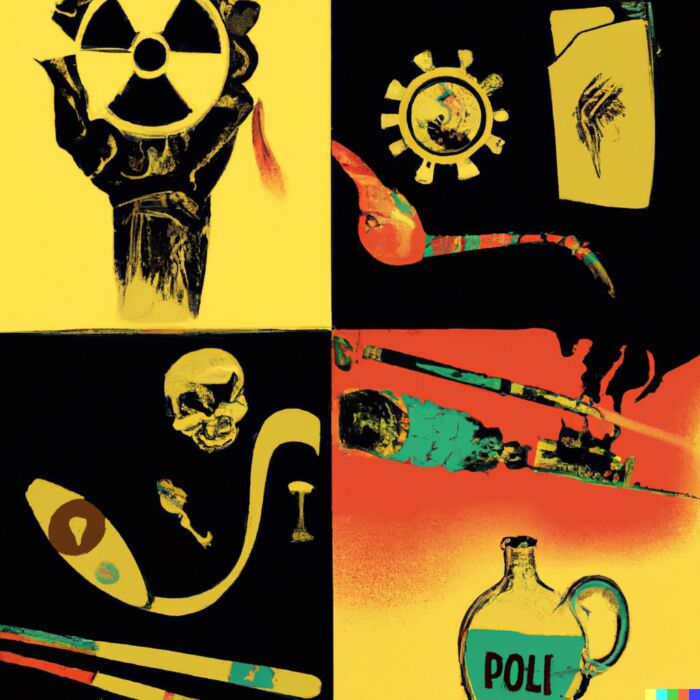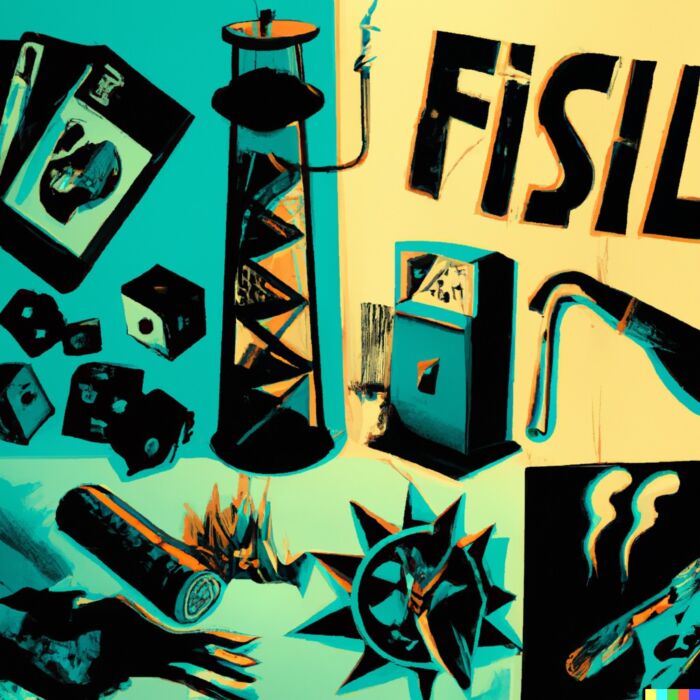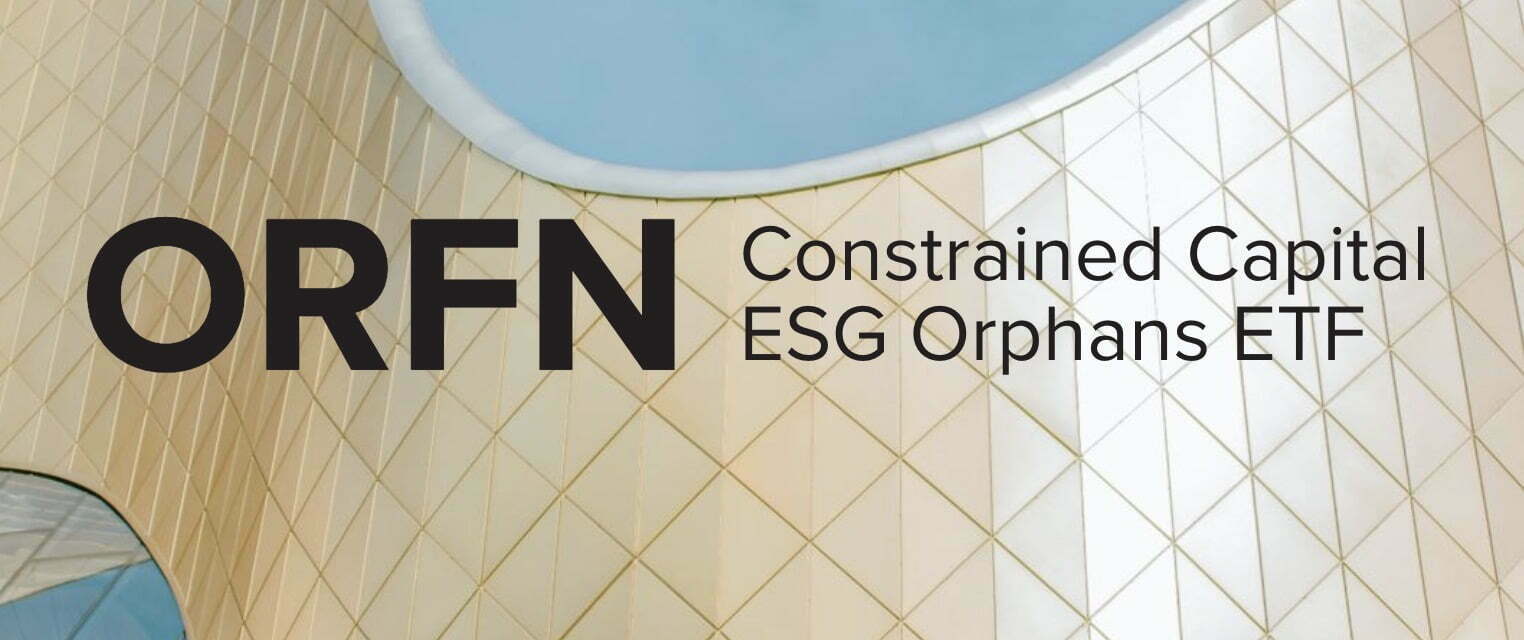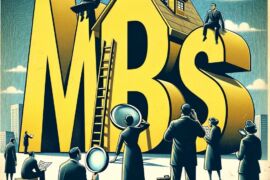I came up with the idea of the “Strategy Behind The Fund” interview series just this past weekend and I’m thrilled to already be publishing the second article.
I really appreciate Mark Neuman (of Constrained Capital and creator of ORFN ETF) taking the time to participate in this brand new series.
The purpose of this series is to hear directly from the creator of the funds.
There are certain features about ETFs that just can’t be thoroughly unpacked in a fund tear sheet or prospectus.
Hence, the aim of this series is to dig a bit deeper to understand the strategy behind the fund, how it may potentially fit into a portfolio at large and when it should perform at its best/worst.
With that in mind, let’s turn things over to Mark to discuss his Capital Constrained ESG Orphans ETF (Ticker: ORFN).
 source: 12019 on pixabay
source: 12019 on pixabay
Constrained Capital ESG Orphans ETF ORFN: Review Of The Strategy Behind The Fund with Mark Neuman

Hey guys! Here is the part where I mention I’m a travel content creator! This “The Strategy Behind The Fund” interview is entirely for entertainment purposes only. There could be considerable errors in the data I gathered. This is not financial advice. Do your own due diligence and research. Consult with a financial advisor.

- source: constrainedcapitaletfs.com (The investment performance results presented here are based on historical backtesting and are hypothetical. Past performance, whether actual or indicated by historical tests of strategies, is not indicative of future results. The results obtained through backtesting are only theoretical and are provided for informational purposes to illustrate investment strategies under certain conditions and scenarios.)
These asset allocation ideas and model portfolios presented herein are purely for entertainment purposes only. This is NOT investment advice. These models are hypothetical and are intended to provide general information about potential ways to organize a portfolio based on theoretical scenarios and assumptions. They do not take into account the investment objectives, financial situation/goals, risk tolerance and/or specific needs of any particular individual.
What’s The Strategy Of ORFN ETF?
For those who aren’t necessarily familiar with “ESG excluded companies” style of investing, let’s first define what it is and then explain this strategy in practice by giving some clear examples.

The ESG Orphans are the exclusions of the ESG bubble of the past decade.
ESG imposed capital constraints on certain sectors resulting in misallocation of capital and malinvestment to areas like tech and healthcare (ESG “darlings”) and away from others like fossil fuel, nuclear energy, and weapons (ESG “Orphans.”)
The exclusions were starved of capital for arbitrarily decided reasons while the inclusions were allocated capital on false pretenses.
These ESG exclusions include fossil fuel, nuclear energy, weapons, alcohol, tobacco, and gambling. Fossil fuel became an “ESG villain” as it was maligned and chided by ESG investors and the “green” movement.
The result was fewer people owning energy stocks than the general market as ESG flows found their “darlings” like big tech (AMZN, AAPL) and excluded or orphaned energy stocks like XOM.
Investing legend Cliff Asness wrote research on constraints on capital resulting in “higher expected return” securities as they become distressed in price and need to offer better returns to attract investors to the maligned sectors.
This was the jumping off point for the ESG Orphans.
Asness concluded, “An ancillary consequence of ESG investing is lower returns.”

Unique Features Of ESG Orphans ETF ORFN
Let’s go over all the unique features your fund offers so investors can better understand it.
What key exposure does it offer?
Is it static or dynamic in nature?
Is it active or passive?
Is it leveraged or not?
Is it a rules-based strategy or does it involve some discretionary inputs?
How about its fee structure?
The ESG Orphans ETF $ORFN tracks the ESG Orphans Index.
The Index is a rules-based, market cap weighted index that rebalances every 6mos.
Some basic rules: Max 25% for one sector, max 10% for one name, top 10 names cannot exceed 50% of the Index.
It uses no leverage.
The 6 excluded sectors in the ESG Orphans are fossil fuel (25%), nuclear energy (25%), weapons (21%), alcohol (12.5%), tobacco (12.5%) and gambling (4%.)
This is a rules-based, passive index.
That said, I created the index based on my methodologies and rules.
So, as one RIA said, “It’s smart-beta.”
And though I don’t like that term, it really refers to the idea that the Index was created by Constrained Capital and doesn’t use a standard benchmark.
The exposure offered by this ETF is the “anti-ESG.”.
It isolated the ESG factor by selecting the sectors quantitatively excluded from the ESG investment bubble across the spectrum.
The underlying consistency is “industries under capital constraints.”
Said differently, the product consists of those sectors that had constraints imposed on them resulting in misallocation of funds and general malinvestment.
The fee on the ETF is 75bps.
Although on the surface it seems high, it is within 1st standard deviation of fees for “thematic” ETFs.
In addition, the nearly 3% dividend in the product helps to offset the fees.

What Sets ORFN ETF Apart From Other Anti-ESG Funds?
How does your fund set itself apart from other equity funds being offered in what is already a crowded marketplace?
What makes it unique?
There are other supposed “anti-ESG” ETFs.
But these funds end up being “sector” based funds with an “anti-ESG” association behind them.
There are alcohol and drug focused ETFs.
There are vice-focused ETFs.
These have some “anti-ESG” exposure to them, but they are beholden to the performance of the individual sectors moreso than ESG itself.
In 2022 these kinds of funds had weak returns with BAD and VICE being down around 18%.
Another one focuses on the energy sector (DRLL) and moves in lockstep with the XLE.
It’s 2022 performance was within 1% of the XLE’s in 2022.
Again, as energy moves, to does this ETF.
So while these other equity ETFs get corralled into the “anti-ESG” bucket, they are merely sector funds with a focus in some of the ESG excluded areas.
ORFN is the only one of its kind that isolated the entire ESG factor, the pure “anti-ESG” ETF.
For further indication of the ORFN’s unique “anti-ESG” nature, I point to the value-bent of the ORFN in terms of the fundamentals.
Yet it outperformed Vanguard’s Value ETF by 4% from the mid-May launch.
ORFN is the pure “anti-ESG” ETF.
source: TD Ameritrade Network on YouTube

What Else Was Considered For ORFN ETF?
What’s something that you carefully considered adding to your fund that ultimately didn’t make it past the chopping board?
What made you decide not to include it?
There were some inquiries into why Berkshire Hathaway didn’t make the ESG Orphans as it is excluded from most ESG funds.
The truth is the North Star of Constrained Capital’s ESG Orphans is “sectors/securities under capital constraints.”
Warren Buffett’s Berkshire is never going to suffer from a lack of capital or any constraints.
Neither banks nor investors are holding back from investing in Warren Buffett’s Berkshire.
In addition, due to its size and market correlation, Berkshire would have diminished the focal point of the ETF in terms of correlation and the “under owned” nature of the excluded sectors.
I wanted this fund to have less correlation to the overall market.

When Will ORFN ETF Perform At Its Best/Worst?
Let’s explore when your fund/strategy has performed at its best and worst historically or theoretically in backtests.
What types of market conditions or other scenarios are most favourable for this particular strategy?
On the other hand, when can investors expect this strategy to potentially struggle?
The ESG Orphans have a relatively high dividend yield, approaching 3%.
It has a market beta of around 0.80.
It screens more closely to value.
It has a more defensive nature to it than a growth fund.
In a raging bull market the $ORFN will lag.
This is the nature of security with a beta under 1.
At 0.80 beta, it is supposed to move at 80% of the overall market.
So, in a bull market where the SPX is up 20%, the $ORFN should return 16%, all else equal.
So in the previous 5 year bull market, say from 2017-2021 where the SPY returned about 11%, the ESG Orphans Index in a back cast returned about 6% p.a.
Now that said, in a bearish market environment like we saw in 2022 where the SPX returned -20% and the NDX returned -32%, the ESG Orphans Index returned over 20%.
That massive outperformance was attributable to the “anti-ESG” posture, the defensive nature, the higher dividend, the value posture, and the fact that nobody owned the Orphans relative to the rest of the market.
It outperformed its beta by 36% (SPX -20%, 0.80 ESG Orphans beta = -16% versus +20%.)
This highlights the unique attributes of the ORFN.
Going forward, in a bearish market I expect the $ORFN to outperform.
In a sideways, churning market, I expect the $ORFN to at least perform in-line and more than likely it will outperform as the market redistributes to a more balanced weight across sectors and the underweighted sectors of the Orphans will see inflows.
If we have a return to the 2010-2020 reflation, QE, ZIRP environment where growth stocks go on a torrid run, the $ORFN will likely underperform.
Some have told me that in this sense, $ORFN acts as a bit of a downside insurance buffer to an overall portfolio.
source: TD Ameritrade Network On YouTube

Why Should Investors Consider Capital Constrained ESG Orphans ETF?
If we’re assuming that an industry standard portfolio for most investors is one aligned towards low cost beta exposure to global equities and bonds, why should investors consider your fund/strategy?
ESG Orphans are contrarian.
These are underowned securities versus the rest of the market.
From 2009-2021 the energy sector weighting shrunk in the SPX from 13.5% to under 3%.
It’s since rebounded to a little over 5%, but it still has a long way to climb back.
Similarly, the Utilities, Materials, and Industrials shrunk while the Info Tech spaces doubled.
The allocation to $ORFN is playing for a reversion in the ESG bubble and a repricing towards the sectors that completely shrunk in the previous decade.
Again, they shrunk due to arbitrary rules based on ESG.
There was no consistency or any real deep reason behind the allocations to ESG other than a mishmash of made up reasons and rationales.
I think about the big cap tech sector in 5 stocks with a combined market cap of approximately $8TLN.
This is AAPL, MSFT, AMZN, GOOGL, and TSLA.
The top 10 energy names (fossil fuel and nuclear energy) in the $ORFN have a market cap around $1.7TLN.
If one assumes a 10% repricing out of big cap tech and into energy, that means $800BLN (10%) out of tech and into energy where that notional as a % of market cap is close to 50%.
How Does ORFN ETF Integrate Into A Portfolio?
Let’s examine how your fund/strategy integrates into a portfolio at large.
Is it meant to be a total portfolio solution, core holding or satellite diversifier?
What are some best case usage scenarios ranging from high to low conviction allocations?
$ORFN can act as a portfolio diversification tool.
It helps create a barbell strategy within a portfolio.
If an investor wants to speculate in volatile growth stocks, whether it’s ARKK or a biotech ETF or even the QQQ, it makes sense to have a counterbalance like the $ORFN as an allocation in a fund.
The big guts trade is to be short the QQQ and long the ORFN.
I still feel as if we are in the early stages of a greater big tech unwind and repricing towards value and the Orphan-type stocks.
There are so many shots on goal and so many scenarios where the ESG Orphans will have a tailwind.
The political winds are shifting.
In the past 6 months there’s been a big pushback against ESG.
Attorneys general are coming after Blackrock.
Many states are questioning allocations in their pension funds and questioning the ESG guidelines.
As folks move away from ESG mandates and towards a bigger universe of stocks, it means the underinvested and the rejects or exclusions will be considered more and receive allocations at least on a relative basis greater than what they were.
This should provide a tailwind to the ESG Orphans.
Potential Cons of ORFN ETF
What’s the biggest point of constructive criticism you’ve received about your fund since it has launched?
There has been a lot of pushback on a few sectors of the Orphans.
The first is the weapons’ sector as many don’t like supporting the arms’ industry.
I look at this a few different ways.
First of all, when both sides of the political spectrum agree on defending Taiwan versus China and supporting the Ukraine, this becomes a bipartisan issue.
Second, many ESG proponents agree with full support that we need to help the Ukraine.
So when the US signs $100bln in funding to the Ukraine, they turn around and buy weapons from RTX, LMT, GD, and NOC.
These are the Orphans.
The ironic thing is that ESG funds could never buy these weapons.
Now it has become very nuanced.
Another area of criticism comes in the alcohol and tobacco sectors.
The challenge I put to those criticizing is that again it comes down to a “universal measure or belief in ‘goodness.’”
There is no right answer.
Medical issues and sick days from alcohol and tobacco cost the US about 40% LESS than the ills and sick days from Type II diabetes and obesity.
With 3 kids of my own, the battle is about junk food and high-fructose corn syrup more than it is about alcohol and tobacco.
The vending machines in kids’ schools are filled with nutrition-less junk food from Coke and Pepsi.
It’s arguable that junk food is more addictive than alcohol and tobacco.
There are big ESG funds that have KO/PEP as top holdings while chiding alcohol and tobacco.
As a CFA charter holder, my analysis shows value in high dividends and cash flow that tobacco and alcohol stocks provide along with an inelasticity in their products that acts defensive in nature and noncorrelated.
The bigger challenge currently overall in the fund is that the underlying index is $3TLN notional while the ETF itself has AUM of just under $4mm.
There’s plenty of capacity.
Folks just need to see the Truth in ESG and the opportunity for better risk-adjusted returns that this basket provides in the medium to long term.
Potential Pros of ORFN ETF
On the other hand, what have others praised about your fund?
The performance and the proof-of-concept.
The ESG Orphans Index returned 20% in 2022, beating most everything.
The $ORFN returned a cumulative 6.5% from the mid-May launch through the end of 2022.
It beat most things.
The Orphans were intended to help investors manage oncoming ESG risk that we foresaw when we launched the fund.
It has done exactly that.
As the ESG football gets punted back and forth and a repricing and revaluation occurs, these Orphans should continue to offset the ESG risk.
Constraints On Capital Is Not A Brand-New Idea
We’ll finish things off with an open-ended question. Is there anything that we haven’t covered yet that you’d like to mention about your fund/strategy?
If not, what are some other current projects that you’re working on that investors can follow in the coming weeks/months?
Academic work from MIT, legends in finance like Cliff Asness, luminaries in academia like Professor Aswath Damodaran all converge and point to the attributes of the ESG Orphans.
The Orphans are not a trading vehicle, but an investment thesis set to play out over medium to longer term time horizons.
So far the thesis is working.
It’s still early days.
Constraints on capital is not a brand-new idea, nor is the concept of Wall Street turning a good idea into a bad result.
In the 1980s we saw Michael Milken and junk bonds, Lewis Ranieri and mortgage bonds that became cash cows for institutions while investors and society suffered more than benefitted.
This time around the concept of ESG has been turned into an amorphous investment blob that again helps a few while purporting to help investors and society.
This has yet to pan out.
Many pushing the ESG narrative are focused on gathering assets and collecting fees rather than maximizing returns and benefitting investors and society at large.
The creation of the ESG Orphans and $ORFN was designed to capitalize on this unique opportunity presented by ESG’s shortcomings as presented by Wall Street.
Looking out on the horizon, we have other ideas under the “Capital constraints,” theme including different market caps, more international, and these types of aspects.
That said, we are focused on this product for now and will work on others in the pipeline as this gains more traction.

Constrained Capital ESG Orphans (ORFN) — 12-Question FAQ on Strategy, Rules & Portfolio Fit
1) What is ORFN in one sentence?
ORFN tracks a rules-based “ESG Orphans” index of sectors most commonly excluded by ESG screens—a deliberate “anti-ESG” tilt meant to harvest returns where capital has been constrained.
2) What are “ESG Orphans”?
Industries broadly shunned by ESG mandates—fossil fuels, nuclear energy, weapons, alcohol, tobacco, and gambling—which may face higher expected returns after years of under-ownership and capital scarcity.
3) What’s the fund structure—active or passive?
Passive, rules-based index ETF; no leverage. It follows a custom index designed by Constrained Capital (often called “smart beta”).
4) How is the index built and rebalanced?
Market-cap weighted, rebalanced every 6 months, with guardrails: ≤25% per sector, ≤10% per name, and top-10 ≤50% of index weight.
5) What are the target sector weights?
Six excluded sectors with guidance caps: Fossil fuel (25%), Nuclear (25%), Weapons (21%), Alcohol (12.5%), Tobacco (12.5%), Gambling (4%) (subject to the index’s rules and market caps).
6) What’s the core investment thesis?
Constraints on capital can push prices below fundamentals; when an asset is widely excluded, it must offer better prospective returns to attract buyers—ORFN aims to systematically capture that “anti-ESG” factor.
7) How does ORFN differ from other “anti-ESG” or “vice” funds?
Many rivals are single-sector (e.g., energy) or theme slices (vice, alcohol), so they mostly track that sector’s beta; ORFN isolates the full anti-ESG basket across multiple excluded industries to target the broader constraint effect.
8) When might ORFN outperform or lag?
Tailwinds / Outperform: risk-off/bearish or rotational regimes favoring value, dividends, energy/industrials/defense, or broad sector re-balancing away from mega-cap tech.
Headwinds / Lag: raging growth bull markets (QE/ZIRP-like) where low-beta, value-tilted exposures trail.
9) What are notable profile stats called out by the sponsor?
A sub-1.0 beta (~0.8), a value tilt, and a dividend profile (≈3% historically noted)—all subject to change and not guaranteed.
10) Fees and distributions?
Expense ratio ~0.75%; income/distributions vary with holdings and are not guaranteed.
11) How can ORFN fit in a portfolio?
As a satellite diversifier or barbell counterweight to growth/tech exposures (e.g., QQQ/biotech), or as a tactical hedge against ESG crowding; not intended as a total-portfolio solution.
12) Key pushbacks and responses?
Ethical concerns over weapons, alcohol, tobacco; sponsor counters with a focus on cash flow, dividends, defensiveness, and the view that ESG exclusions are inconsistent. Practical concern: small AUM vs. large underlying index capacity.
Connect With Mark Neuman & Constrained Capital
ESG Orphans websites:
www.esgorphans.com (Index site, live time updates, dynamic, TWTR posts, news, research, content)
www.constrainedcapitaletfs.com (ETF website, more static, contains fact sheet, pitch deck, prospectus)
Twitter: @MarkNeuman18 and @ESGOrphan
Email: mark@constrainedcapital.com
Nomadic Samuel Final Thoughts
I want to personally thank Mark for taking the time to participate in the “The Strategy Behind The Fund” series by contributing thoughtful answers to all of the questions!
Mark was also a guest for the “How I Invest” series (How I Invest In ESG Orphans: The Exclusions Of The ESG Bubble) which I recommend checking out.
If you’ve read this article and would like to have your fund featured, feel free to reach out to nomadicsamuel at gmail dot com.
That’s all I’ve got!
Ciao for now!
Important Information
Comprehensive Investment Disclaimer:
All content provided on this website (including but not limited to portfolio ideas, fund analyses, investment strategies, commentary on market conditions, and discussions regarding leverage) is strictly for educational, informational, and illustrative purposes only. The information does not constitute financial, investment, tax, accounting, or legal advice. Opinions, strategies, and ideas presented herein represent personal perspectives, are based on independent research and publicly available information, and do not necessarily reflect the views or official positions of any third-party organizations, institutions, or affiliates.
Investing in financial markets inherently carries substantial risks, including but not limited to market volatility, economic uncertainties, geopolitical developments, and liquidity risks. You must be fully aware that there is always the potential for partial or total loss of your principal investment. Additionally, the use of leverage or leveraged financial products significantly increases risk exposure by amplifying both potential gains and potential losses, and thus is not appropriate or advisable for all investors. Using leverage may result in losing more than your initial invested capital, incurring margin calls, experiencing substantial interest costs, or suffering severe financial distress.
Past performance indicators, including historical data, backtesting results, and hypothetical scenarios, should never be viewed as guarantees or reliable predictions of future performance. Any examples provided are purely hypothetical and intended only for illustration purposes. Performance benchmarks, such as market indexes mentioned on this site, are theoretical and are not directly investable. While diligent efforts are made to provide accurate and current information, “Picture Perfect Portfolios” does not warrant, represent, or guarantee the accuracy, completeness, or timeliness of any information provided. Errors, inaccuracies, or outdated information may exist.
Users of this website are strongly encouraged to independently verify all information, conduct comprehensive research and due diligence, and engage with qualified financial, investment, tax, or legal professionals before making any investment or financial decisions. The responsibility for making informed investment decisions rests entirely with the individual. “Picture Perfect Portfolios” explicitly disclaims all liability for any direct, indirect, incidental, special, consequential, or other losses or damages incurred, financial or otherwise, arising out of reliance upon, or use of, any content or information presented on this website.
By accessing, reading, and utilizing the content on this website, you expressly acknowledge, understand, accept, and agree to abide by these terms and conditions. Please consult the full and detailed disclaimer available elsewhere on this website for further clarification and additional important disclosures. Read the complete disclaimer here.


 source: 12019 on pixabay
source: 12019 on pixabay



